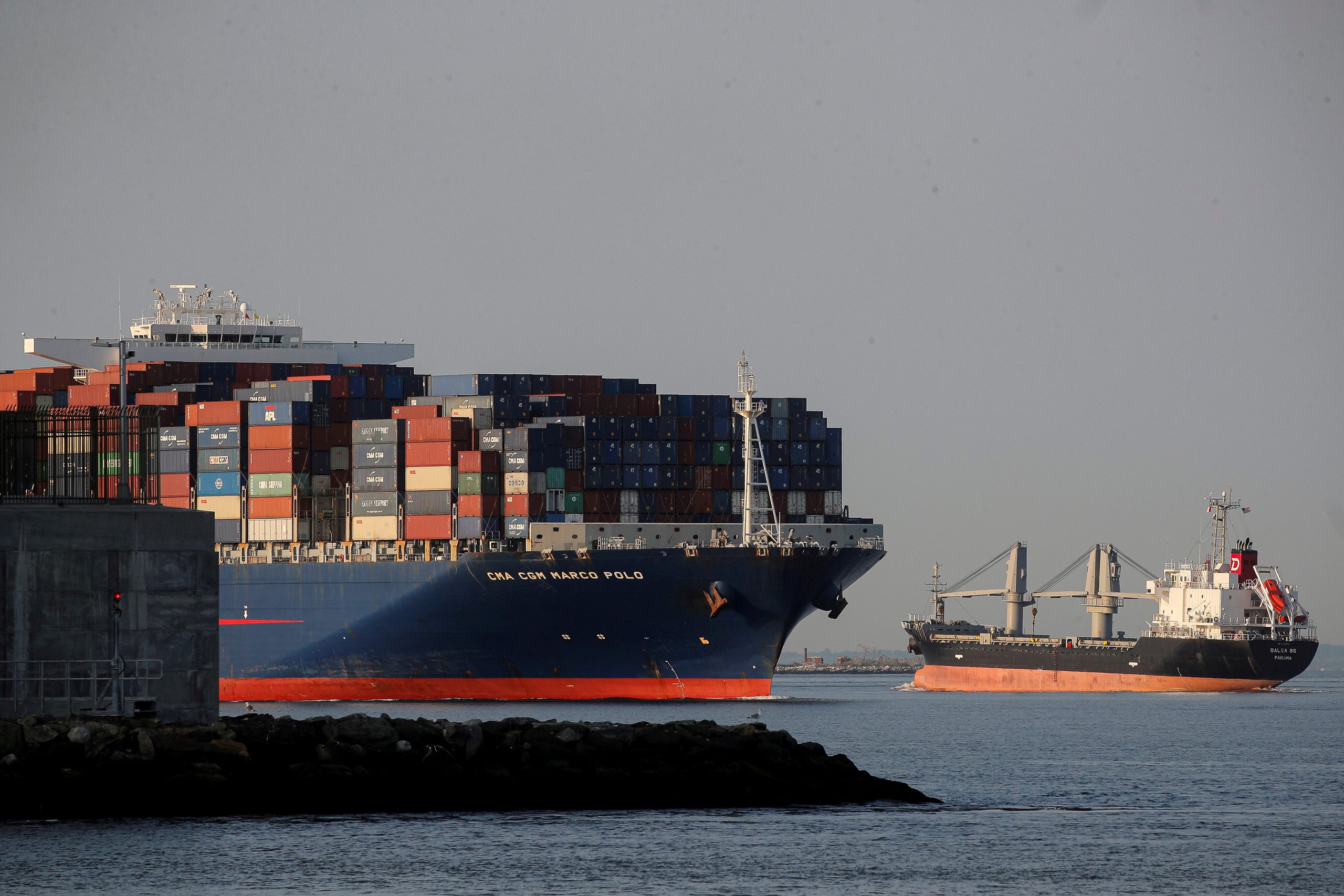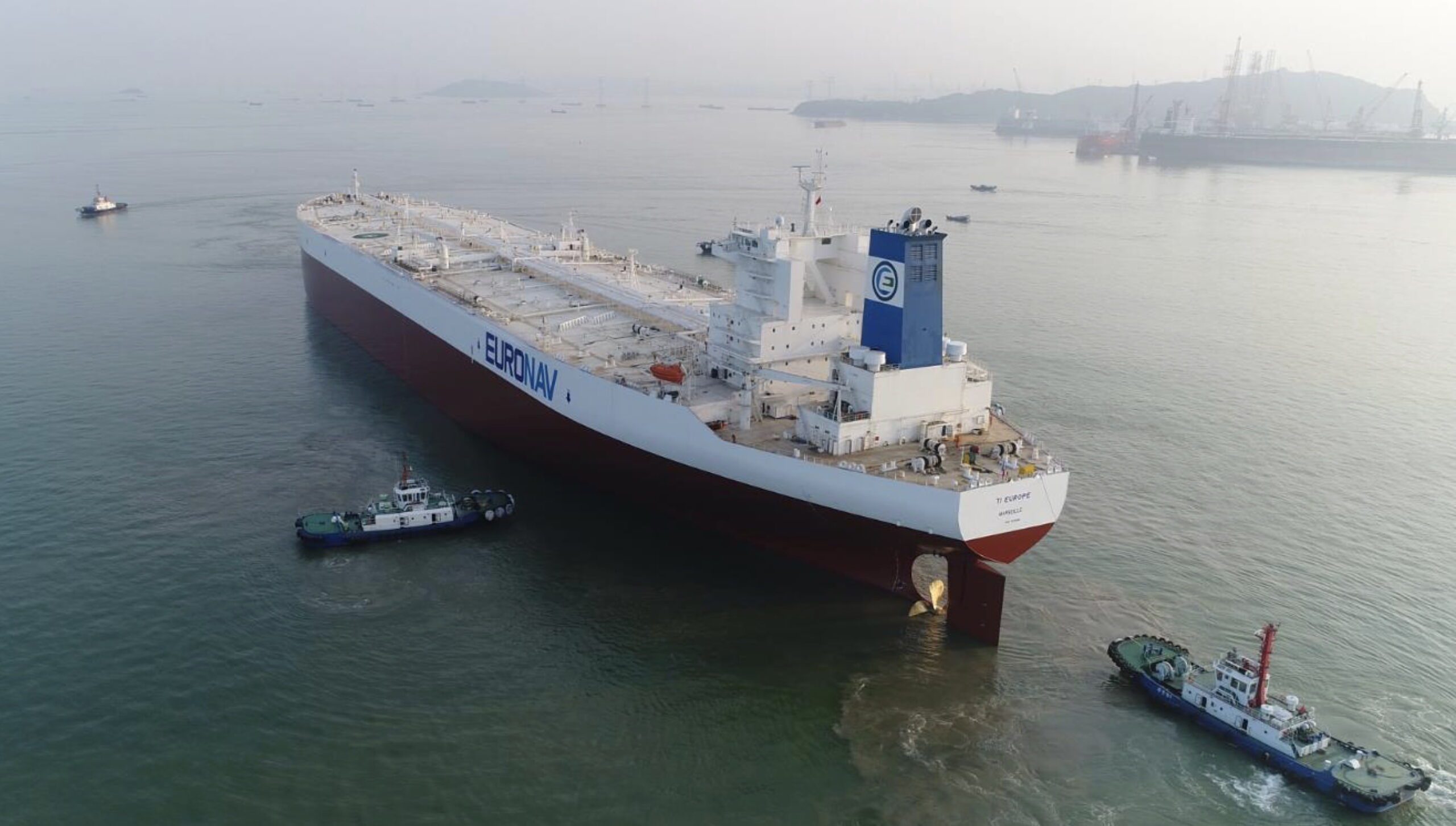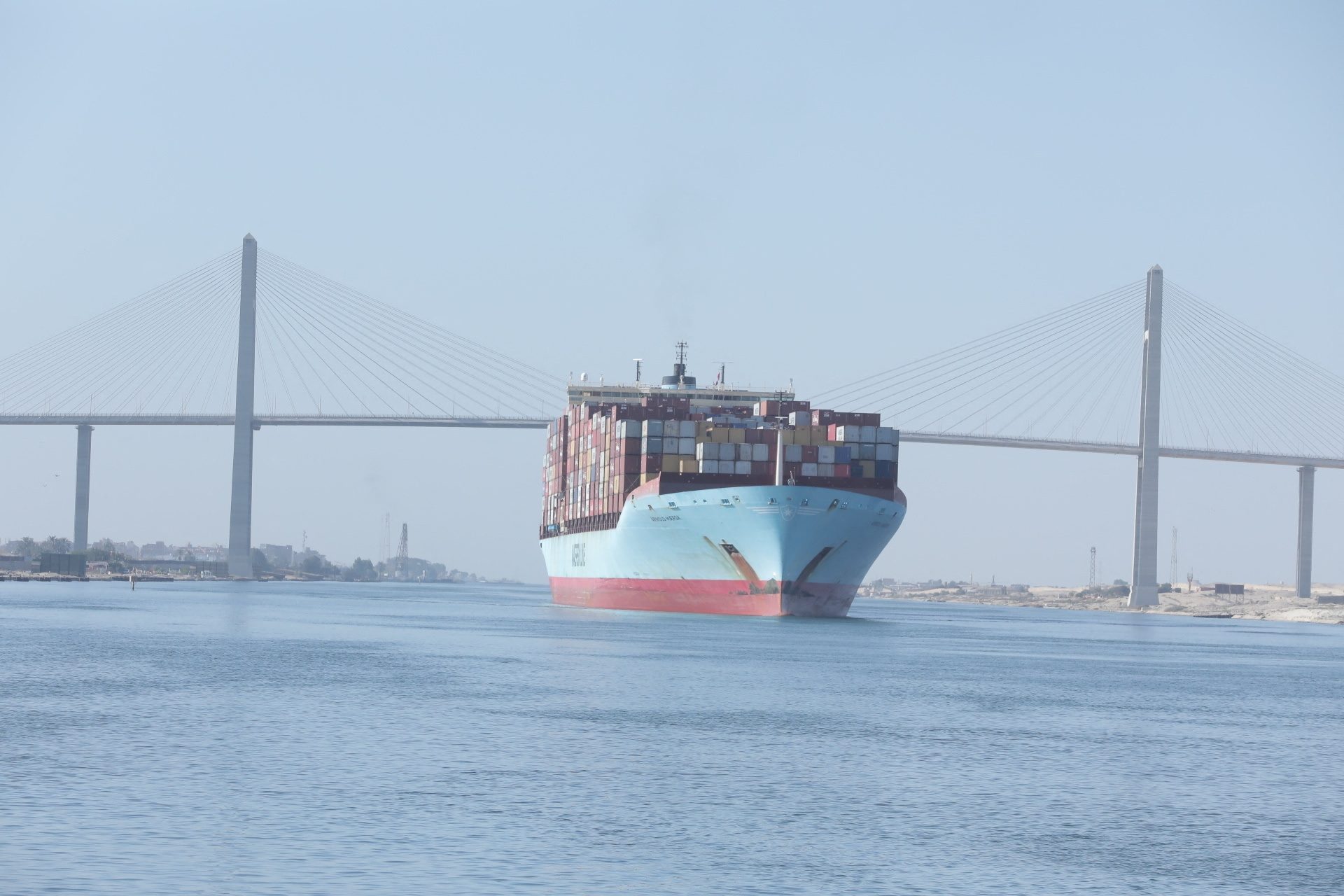Photo: Avigator Thailand / Shutterstock
By Brendan Murray (Bloomberg) — Just as the U.S. president urges American companies to ditch China, many of them can’t get more of China fast enough.
Consider the voyage of the container ship Melina, which set sail Wednesday from a Chinese port near Shenzhen with products bound for U.S. households, a hulking symbol of how the flow of goods is adapting in a global economy crippled by a pandemic.
Capable of carrying almost 4,300 containers, she’s downright petite in an industry where the biggest can handle more than 20,000. The Melina is part of a budding fleet of smaller vessels that Covid-19 has thrust into service between the world’s biggest economies. Smaller means faster. She’ll dock in Los Angeles on July 6 after a 12-day nonstop journey — a week ahead of a larger ship doing the same route.
With the extra speed comes a price that’s as much as double the cost of standard transpacific service, which is already skyrocketing because the world’s biggest shipping companies have scaled back capacity by about 25% this quarter and may cut it 10% in the third quarter, according to industry observers. They’re downshifting because broadly they see demand recovering only slowly and plenty of fog on the global economic horizon.
But for now, shipping demand from some companies remains brisk, justifying the added import cost of fast delivery to meet the burst of online shopping for everything from protective medical gear to baby pools for the backyard.
Haifa, Israel-based Zim Integrated Shipping Services Ltd., which operates the Melina, Honolulu-based Matson Inc. and CMA CGM SA of France are among those offering the express service between China and the U.S. — the kind of links that show the difficulty President Donald Trump faces to achieve a “complete decoupling” of the world’s largest economies and bringing production back home.
“We expect the need for this expedited service to be permanent and actually grow as the share of e-commerce in global trade will continue to grow at a higher pace than other commerce,” Nissim Yochai, Zim’s executive vice president in the Pacific, said from Hong Kong. “This abnormal period will continue as long as the world will continue to find a balance between protecting from the Covid-19 pandemic and the need for people to get out to work and socialize and, of course, consume.”
Striking that balance between global supply and demand is what shipping companies are trying to do constantly, looking months and even years in advance. The pandemic has made that job much harder. One way to do it is to cancel sailings, which they’ve been doing a lot lately. At the adjoining ports of Los Angeles and Long Beach, the main gateway for Chinese imports, 45 trips have been scrapped this quarter, more than four times the number in the second quarter of 2019.
For some U.S. companies on the receiving end of goods, shipping disruptions are starting to subside. For others, they’re just beginning.
“We’re not at the point right now where we’ve rebalanced supply to the demand because the demand signals are jumping all over the board,” said Abe Eshkenazi, CEO of the Association for Supply Chain Management, an industry group based in Chicago. No one knows how fast American consumers will rebound, whether the e-commerce upswing is sustainable, or whether a damaging second wave of infections will further knock global trade off-kilter, he said.
Historically, container shipping volume is a good barometer of the world’s economy health, though the threat of tariffs during the U.S.-China trade war of the past two years weakened that relationship.
Earlier this month, Denmark’s A.P. Moller-Maersk A/S, the world’s biggest container liner, said volumes this quarter would be down 15%-18% — ugly, but less hideous than its previous call for a 20%-25% drop. While Maersk isn’t offering full-year guidance, citing uncertainty about demand in the second half, others are laying out the challenges.
Mitsui OSK Lines Ltd., one of Japan’s largest shippers, is cutting as many as 40 vessels, about 5% of its fleet, among other “defensive measures” outlined in a plan last week that doesn’t see the global economy getting back to pre-pandemic levels until the end of 2022, or later.
“We’re not out of the woods yet,” said Nerijus Poskus, global head of ocean operations and procurement at Flexport Inc., a San Francisco-based freight logistics company. He expects the capacity reductions in the third quarter for both transpacific and Asia-to-Europe markets to be a little less than the cuts this quarter but still a “significant reduction” of as much as 10%.
About 80% of the world’s trade crosses an ocean by ship, and the industry typically has two busy seasons tied to Chinese holidays — the New Year and Golden Week in October. With normal shipping rates double what they were three months ago, and air cargo rates still elevated because of a dearth of commercial flights, importers are facing the strains of a peak season now.
“The challenges are capacity and price,” Poskus said. Premium services like the fast boats are reshaping the industry, he said. “If you don’t book early enough and you don’t pay top dollar, you’re out of luck.”
More Bounce
As an essential business during U.S. lockdowns, Rural King Farm & Home Stores was one of the more fortunate ones during the crisis, according to Heath Pittman, international logistics manager at the Illinois-based retailer, which has about 120 stores.
A general merchandiser in small-town America that offers free coffee and a bag of popcorn, Rural King was no different than other traditional retailers that experienced shortages of toilet paper, paper towels and hand sanitizer.
But thanks to a flexible supply chain and close relationships with vendors in China and elsewhere in Asia, it has managed to keep most items stocked and is having a good year, fueled in part by demand for unexpected products.
Who knew squirrel feeders would be big sellers in a global health crisis, or plastic pools. And there’s another product Pittman didn’t anticipate would fly off the shelves.
“We just got another shipment of trampolines,” he said, adding that Rural King stores sold 300 in one day recently. Good thing for him he has suppliers in China — 100 to 200 of them — and in Vietnam whom he talks to daily and who are scrambling to help meet the rush: “They are unbelievable with these orders.”
(c) Copyright Thomson Reuters 2020.

 Join The Club
Join The Club











